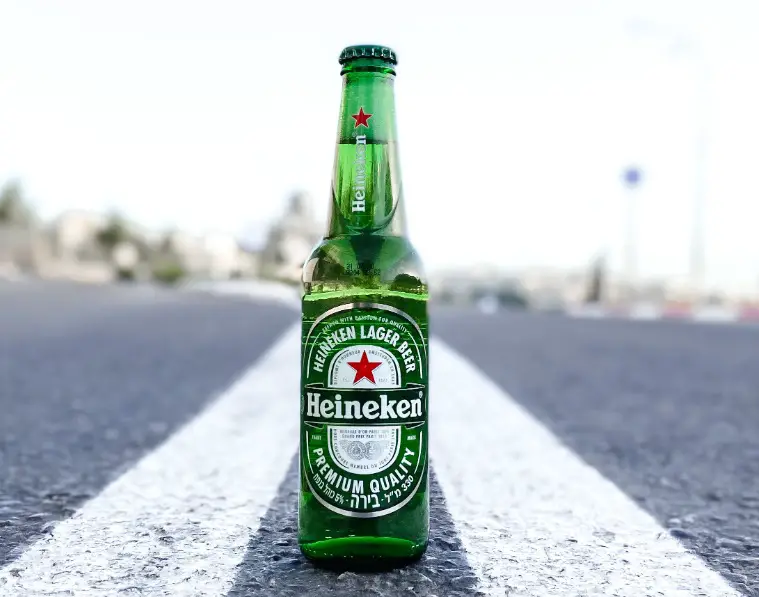Is Beer Salt Bad For You?
Beer has salt, yes. Some beers have A LOT of salt, like Gose beer. But is beer salt bad for you? Let’s try to answer the question!
Beer salt can be a tasty addition to your drink (yep, some people add salt to beer!), but pay attention to how much you use, especially if you’re keeping an eye on your health. The high sodium content might not be the best for everyone, especially if you’re dealing with things like high blood pressure.
However, if you enjoy it in moderation and you don’t have specific health issues, it can be a fun way to spice up your beverage. Just remember, like with anything, balance is key, and being aware of your own health needs is always a good idea!

Common Sources of Salt in Beer
Brewing Water: The water used in brewing plays a crucial role in determining the overall taste of beer, and its mineral content, including sodium, can influence the final product.
Ingredients: Some natural ingredients used in brewing, such as malt and hops, may contain trace amounts of sodium. The variation in these ingredients can contribute to differences in sodium levels among different beers.
Yeast: The yeast used in fermentation can also introduce subtle variations in sodium content. The type of yeast strain and the fermentation conditions contribute to the overall flavor profile, including the perception of saltiness.
Additives and Adjuncts: Some brewing processes involve the addition of adjuncts or flavor enhancers, which might contain sodium. This is especially true for craft and specialty beers where unique ingredients are often used to create distinct flavors.
Variations in Sodium Levels Among Common Beers
Lager vs. Ale: Different styles of beer, such as lagers and ales, can have varying sodium levels. Lagers, known for their clean and crisp taste, may have lower sodium content compared to ales, which often exhibit a more complex flavor profile.
Light vs. Dark Beers: The color and roastiness of a beer can also impact its sodium content. Darker beers, like stouts and porters, might have slightly higher sodium levels due to the characteristics of the malt used in their production.
Commercial vs. Craft Beers: Sodium levels can differ between mass-produced commercial beers and craft brews. Craft brewers often experiment with different ingredients and processes, leading to a broader range of sodium content in their products.
Regional and Cultural Influences: Brewing traditions and preferences vary globally, resulting in regional differences in sodium levels. Beers from certain brewing regions may showcase distinctive sodium profiles based on local ingredients and styles.

Brewing Process and Salt Addition:
Malting: The brewing process typically begins with malting, where grains like barley are soaked, germinated, and dried. The malted grains contribute sugars necessary for fermentation.
Mashing: The malted grains are mashed with hot water, releasing enzymes that convert starches into fermentable sugars. This mixture, called the mash, is then lautered to extract liquid wort.
Boiling: The wort is brought to a boil, and hops are added for flavor and aroma. Some brewers may introduce salts during this stage to enhance certain characteristics or balance the beer’s profile.
Fermentation: The boiled wort is cooled and transferred to fermentation vessels, where yeast is added to convert sugars into alcohol and carbon dioxide.
Conditioning: After fermentation, the beer undergoes conditioning to allow flavors to mature and any remaining particles to settle.
Filtration and Carbonation: The beer may be filtered to remove sediment, and carbonation is often adjusted to achieve the desired level of fizziness.
Packaging: The final step involves packaging the beer into bottles, cans, or kegs for distribution and consumption.
Regulatory Guidelines on Sodium Content:
Regulatory guidelines on sodium content in beer vary across regions, and some countries may not have specific regulations addressing sodium levels. In the United States, for example, the Alcohol and Tobacco Tax and Trade Bureau (TTB) regulates beer labeling but does not set specific limits on sodium content.
However, some countries may have general guidelines on food and beverage labeling that require manufacturers to disclose nutritional information, including sodium content, on product labels. Brewers, especially those producing beers for international markets, often adhere to these guidelines to provide consumers with transparent information about the nutritional aspects of their products.
It’s essential for consumers to check product labels for nutritional information if they are concerned about sodium intake. Brewers may also voluntarily provide such information to cater to health-conscious consumers and those with dietary restrictions.

Alternatives and Low-Sodium Options in Beer:
Low-Sodium Beer Options:
- Some breweries recognize the demand for low-sodium alternatives and produce beers with reduced sodium content. These options are designed for individuals who are mindful of their salt intake or have specific dietary restrictions.
Light Beers:
- Light beers, often associated with lower calorie and carbohydrate content, may also have relatively lower sodium levels compared to their fuller-bodied counterparts. These beers can be a suitable option for those looking for a lighter beverage.
Craft Breweries Experimentation:
- Craft breweries, known for their innovation, may offer unique low-sodium or salt-free beers. Brewers may experiment with various ingredients and brewing techniques to create flavorful alternatives for individuals with specific preferences or health considerations.
Homemade and Homebrewing:
- Individuals interested in controlling the sodium content of their beer can explore homebrewing. By brewing beer at home, enthusiasts have the flexibility to choose ingredients with lower sodium content and experiment with recipes that align with their dietary goals.
Salt Substitutes in Brewing:
Seaweed and Mineral Additions:
- Some brewers use seaweed or mineral additions to impart a salty flavor without relying solely on sodium chloride. These alternative sources of salinity can contribute unique taste profiles to the beer.
Gypsum and Calcium Chloride:
- Brewers looking to adjust the mineral content of their water and enhance certain flavors may use compounds like gypsum and calcium chloride. While not direct substitutes for sodium, these minerals can influence the overall perception of saltiness.
Sour Beers and Wild Fermentation:
- Sour beers, often brewed with wild fermentation, can exhibit a tangy and slightly salty character. The acidity in these beers can create a sensation reminiscent of saltiness without the need for added sodium.
Creative Ingredients:
- Craft brewers may experiment with creative ingredients such as herbs, spices, or fruits to introduce unique flavors, including those with a hint of salinity. This allows for the creation of diverse and flavorful beer options without relying on traditional salt additions.
Exploring alternatives and low-sodium options, both in commercial products and homebrewing, offers consumers the opportunity to enjoy beer while aligning with their taste preferences and health goals. As the demand for diverse and health-conscious beverages grows, the brewing industry continues to adapt, providing a range of options to cater to various consumer needs.

Common Misconceptions about Salt in Beer:
Myth: All Beers Contain High Levels of Salt:
- Clarification: Not all beers contain high levels of salt. The sodium content in beer varies based on factors such as the brewing process, ingredients, and beer style. Many beers have a relatively low sodium content, and the perception of saltiness can be influenced by other flavor components.
Myth: Adding Salt Improves Shelf Life:
- Clarification: While salt has preservative properties, the addition of salt to beer is not primarily intended to improve its shelf life. Modern brewing practices and proper packaging techniques are more effective in ensuring beer stability and freshness.
Myth: Salt is Added to Mask Flavors:
- Clarification: Salt is not solely added to mask flavors in beer. It can be used in brewing to enhance certain characteristics, balance sweetness, or contribute to a particular style, such as a gose or a margarita-inspired beer. It is a deliberate choice rather than a cover-up for undesirable tastes.
Myth: Salt is Always Harmful to Health:
- Clarification: While excessive salt intake can be detrimental to health, the sodium content in most beers is not typically a significant contributor to daily sodium intake. Moderate beer consumption can be part of a balanced lifestyle for individuals without specific health concerns.
Myth: All Salty Beers are High in Sodium:
- Clarification: The perception of saltiness in beer can come from various sources, not just sodium chloride. Brewers may use alternative sources of salinity, such as seaweed or minerals, to achieve a salty flavor without necessarily adding high levels of sodium.
Myth: Salty Beers Are Unpleasant:
- Clarification: Salty beers, such as gose or certain sour styles, are intentionally brewed to offer a unique and enjoyable flavor experience. The perception of saltiness in these beers contributes to their distinctive profiles and is not necessarily a flaw.
Role of Salt in Brewing:
- Salt plays a nuanced role in brewing, contributing to the overall balance of flavors. When used judiciously, it can enhance sweetness, suppress bitterness, and create a harmonious taste profile. Brewers carefully consider the type and amount of salt to achieve specific flavor goals, and its addition is a deliberate choice rather than an oversight or necessity.

Wrapping It Up
In a nutshell, whether salt in beer is good or bad for you depends on your health and how much you drink. While too much salt can be a concern, most beers don’t pack a sodium punch that would drastically impact your daily intake. Enjoying beer in moderation can be a part of a balanced lifestyle, especially if you’re mindful of your health. So, it’s all about making choices that work for you and savoring your brew responsibly!

I am a young architect with a passion that goes beyond blueprints… it’s beer! undertherosebrewing.com is more than just a blog, it’s a manifestation of my lifelong dream to explore, read, and learn everything about beer. Join the blog on this unfiltered and genuine adventure into the heart of beer culture. Cheers!






